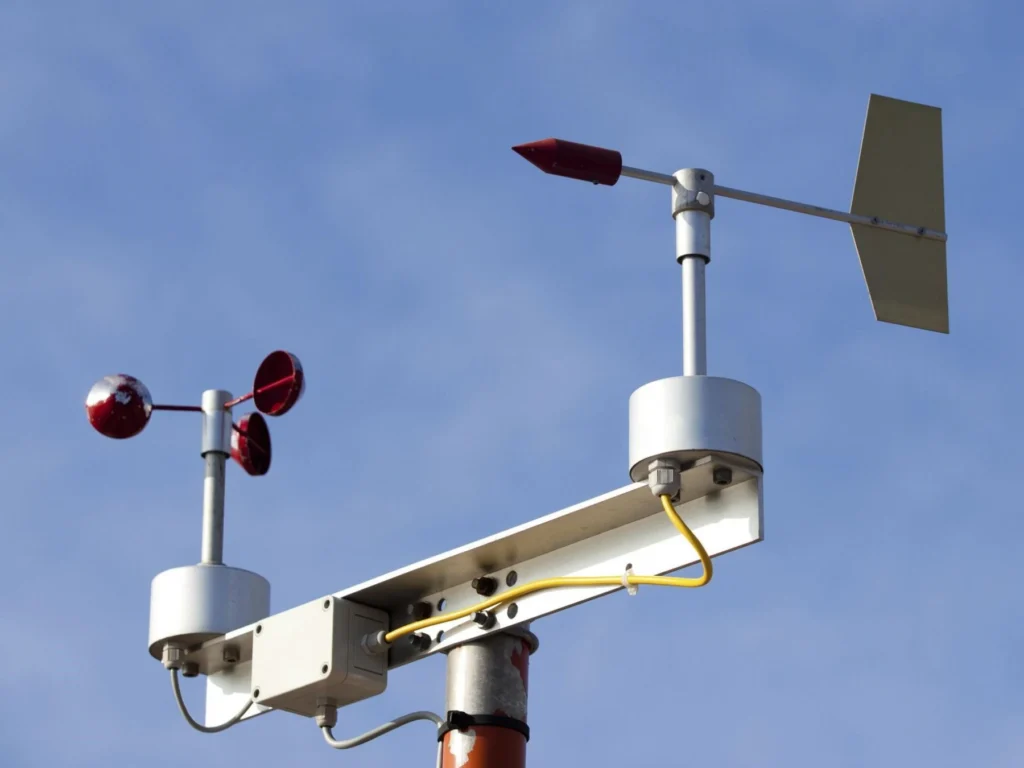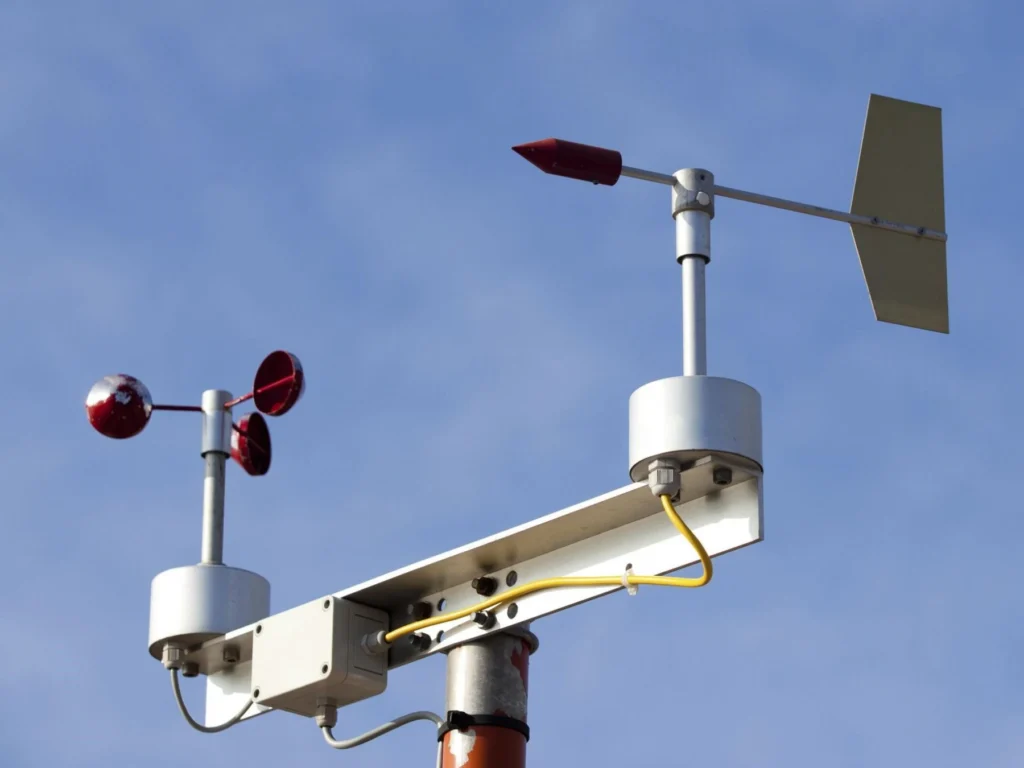
# Wind Measuring Instrument: A Comprehensive Guide to Anemometers and Their Applications
Wind measuring instruments, commonly known as anemometers, are essential tools for measuring wind speed and direction. These devices are widely used in various fields, including meteorology, aviation, marine navigation, and environmental monitoring. This guide will explore the different types of anemometers, their working principles, and their applications.
## What is an Anemometer?
An anemometer is a device used to measure the speed and sometimes the direction of the wind. The term “anemometer” is derived from the Greek word “anemos,” meaning wind. These instruments are crucial for understanding weather patterns, ensuring safety in aviation and marine activities, and optimizing renewable energy systems like wind turbines.
## Types of Anemometers
There are several types of anemometers, each designed for specific applications. Here are the most common ones:
### 1. Cup Anemometer
The cup anemometer is one of the oldest and most widely used types. It consists of three or four cups mounted on horizontal arms, which are attached to a vertical shaft. As the wind blows, the cups rotate, and the speed of rotation is proportional to the wind speed. This type of anemometer is simple, reliable, and commonly used in weather stations.
### 2. Vane Anemometer
A vane anemometer, also known as a windmill anemometer, features a propeller or a set of blades that rotate when exposed to wind. The rotation speed is measured to determine the wind speed. Vane anemometers are often used in applications where both wind speed and direction need to be measured, such as in aviation and marine navigation.
### 3. Hot-Wire Anemometer
The hot-wire anemometer uses a thin wire heated to a constant temperature. As the wind passes over the wire, it cools down, and the amount of cooling is proportional to the wind speed. This type of anemometer is highly sensitive and is often used in laboratory settings and for measuring low wind speeds.
### 4. Sonic Anemometer
Sonic anemometers measure wind speed and direction using ultrasonic sound waves. They consist of multiple pairs of transducers that send and receive sound signals. The time it takes for the sound to travel between the transducers is affected by the wind, allowing the device to calculate wind speed and direction. Sonic anemometers are highly accurate and are used in advanced meteorological research and wind energy applications.
### 5. Laser Doppler Anemometer
Laser Doppler anemometers use laser beams to measure the velocity of particles in the air. As the particles move with the wind, they scatter the laser light, and the Doppler effect is used to determine the wind speed. This type of anemometer is highly precise and is used in specialized research applications.
## Applications of Anemometers
Anemometers have a wide range of applications across various industries. Here are some of the most common uses:
### 1. Meteorology
In meteorology, anemometers are used to measure wind speed and direction, which are critical for weather forecasting and climate studies. Accurate wind measurements help meteorologists predict weather patterns, storms, and other atmospheric phenomena.
### 2. Aviation
In aviation, anemometers are essential for ensuring the safety of aircraft during takeoff, landing, and flight. Pilots rely on accurate wind speed and direction data to make informed decisions and avoid hazardous conditions.
### 3. Marine Navigation
Marine vessels use anemometers to monitor wind conditions, which are crucial for safe navigation. Understanding wind patterns helps sailors optimize their routes, conserve fuel, and avoid dangerous weather conditions.
### 4. Wind Energy
In the wind energy sector, anemometers are used to assess wind resources and optimize the performance of wind turbines. Accurate wind measurements are essential for selecting suitable locations for wind farms and maximizing energy production.
### 5. Environmental Monitoring
Anemometers are also used in environmental monitoring to study
Keyword: wind measuring instrument
